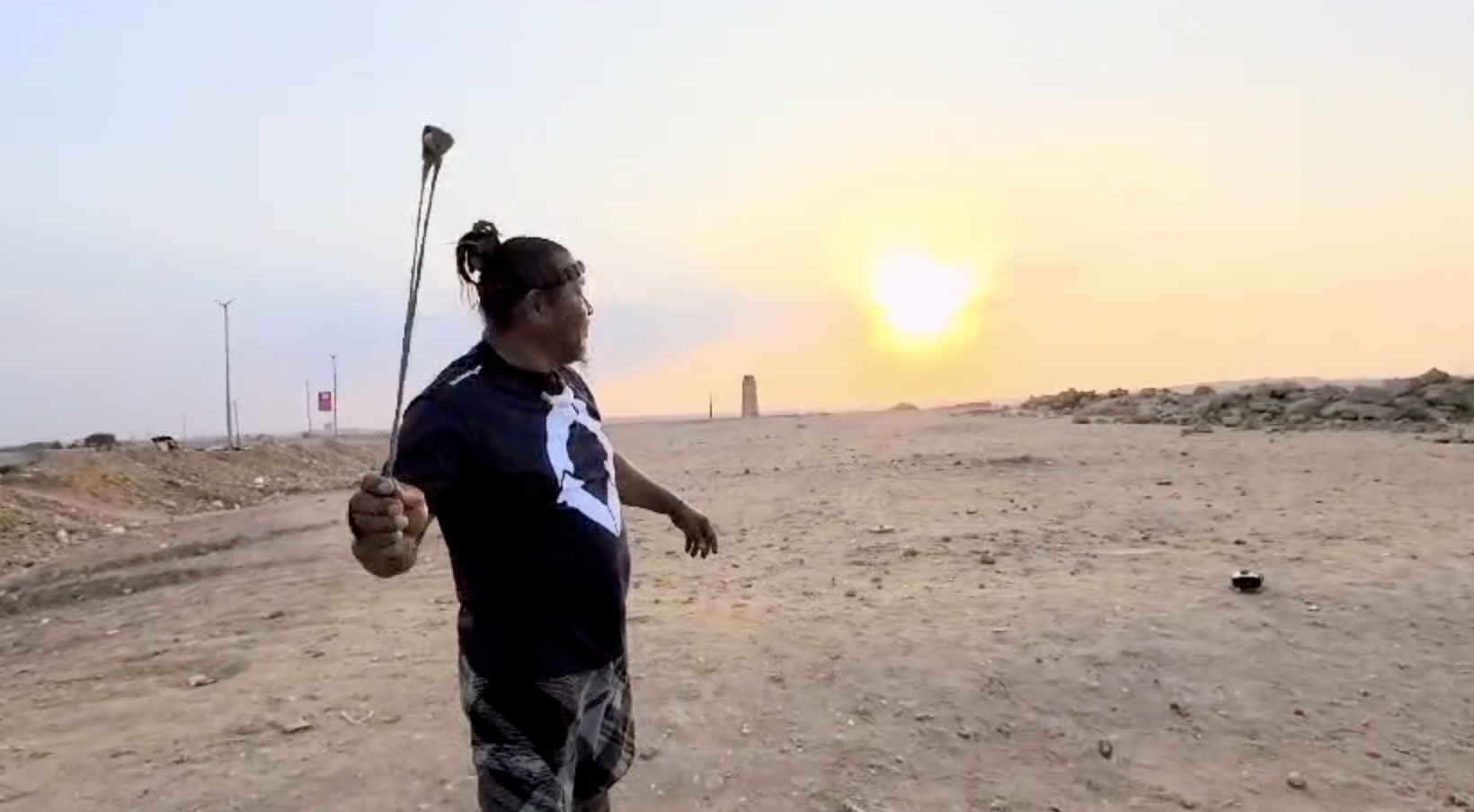
22 May REVIVING TRADITION: THE RETURN OF SLINGING TO THE MARIANA ISLANDS AT FESTPAC 2024
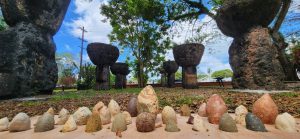
In the lush landscapes and rich cultural tapestry of the Mariana Islands, a timeless practice is experiencing a passionate revival. Roman Dela Cruz, a key figure in the indigenous Chamorro community and co-owner of Fokai Industries, is leading this resurgence. As the Festival of Pacific Arts & Culture (FestPAC) approaches, Dela Cruz is set to represent Guam, carrying forward the legacy of his ancestors through the ancient art of stone slinging.
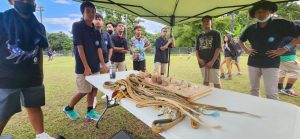 Åcho’ atupat: The Ancient Weapon of the Chamorro Warriors
Åcho’ atupat: The Ancient Weapon of the Chamorro Warriors
Slingstones, known as åcho’ atupat in Chamorro, were used as weapons by ancient Chamorro warriors. These stones, sharpened at both ends, were hurled from a sling with deadly force during combative times. Crafted from limestone, basalt, or fire-hardened clay, slingstones were hung from slings made of pandanus or coconut fiber, the latter being far more durable.
Early accounts highlight the deadly accuracy with which ancient Chamorros wielded these stones. Associated with the weaponry of the Latte period, slingstones were also used during early colonial history as weapons of resistance against Spanish colonization. The art of crafting and hurling these stones was a prized skill among Chamorro men.
Father Pedro Coomans, in The History of the Mariana Island Mission for the 1667-1673 Period, described these weapons: “Their offensive weapons include the sling, which they aim very skillfully at the head. Out of small ropes, they weave a sort of net-bag, in which to carry stones with an oblong shape, some formed out of marble stone, and others of clay, hardened in either the sun or fire. They whirl and shoot those so violently. Should it make an impact upon a more delicate part, like the heart, or the head, the man is flattened on the spot.”
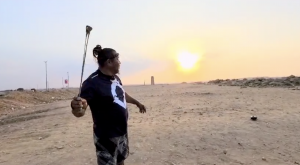 A Testament to Craftsmanship and Warfare
A Testament to Craftsmanship and Warfare
Unlike other regions where slingstones were simply naturally occurring rocks, Marianas slingstones were meticulously manufactured from various materials, including coral, limestone, basalts, and clay. These materials were chipped and abraded into aerodynamic shapes or rolled and sunbaked or fired when clay was used. The most favored design was the bipointed ovoid style, resembling American or Rugby mini-footballs. Some slingstones were diamond or egg-shaped, with most hand-sized and weighing between 40 to 80 grams. A few ceremonial ones exceeded one kilogram in weight.
Though primarily a combat weapon, slingstones were also used for bird hunting. Early Spanish chronicles attest to the Chamorro warriors’ prowess, noting their deadly accuracy and force in hurling slingstones, akin to being fired from a gun.
A Legacy Carried Through Millennia
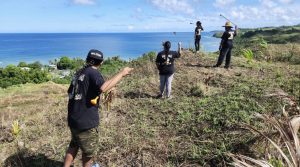
The Chamorro people have inhabited the Mariana Islands for at least 3500 years, possibly as long as 4600 years. Identifiable slingstones, however, do not appear in the archaeological record until around 2000 years ago, with a notable proliferation during the Latte Period of Marianas prehistory, beginning 800-1000 years ago. This period marked the advent of warfare, signaled by the increased presence of slingstones.
The origin of Guam’s sling technology remains a topic of debate. Some archaeologists suggest independent development or introduction from the Philippines, though no antecedent technology has been identified in Southeast Asia. It is more likely that the sling and football-shaped slingstones were introduced from Melanesia, particularly from the Bismarck Archipelago, where slingstones date back 2000-2400 years, and the Santa Cruz-Reef Islands, dating back 3100 years.
Understanding the origins and spread of the sling in Oceania can also shed light on possible pre-European connections with the Americas. While football-shaped slingstones are unknown in island Southeast Asia until about 3100 years ago, they may have roots going back over 8000 years on the west coast of the continental United States. The slingstone was also the projectile weapon of the Inca and preceding Andean cultures of South America.
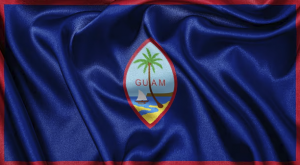 A Symbol of Chamorro Pride
A Symbol of Chamorro Pride
Guam is the world’s only political entity that features the slingstone on its seal and flag. As FestPAC 2024 approaches, the Chamorro people have much to celebrate. The revival of the art of slinging, championed by figures like Roman Dela Cruz, is a testament to the enduring strength and resilience of Chamorro culture. This ancient practice, once a crucial part of warfare, now serves as a powerful symbol of heritage and pride for the people of the Mariana Islands and Guam.
In honoring their ancestors through the art of slinging, the Chamorro community reaffirms its connection to a rich history and vibrant culture, inspiring future generations to take pride in their unique heritage.

